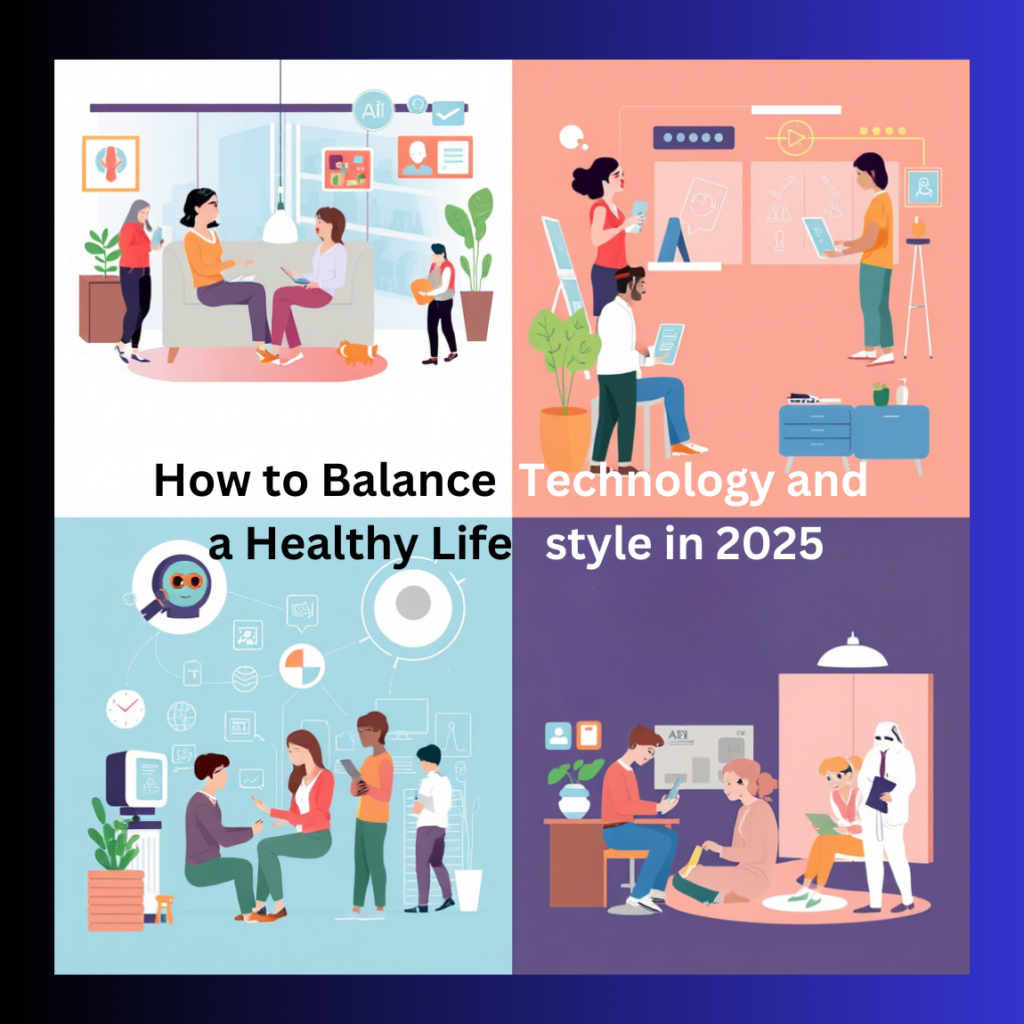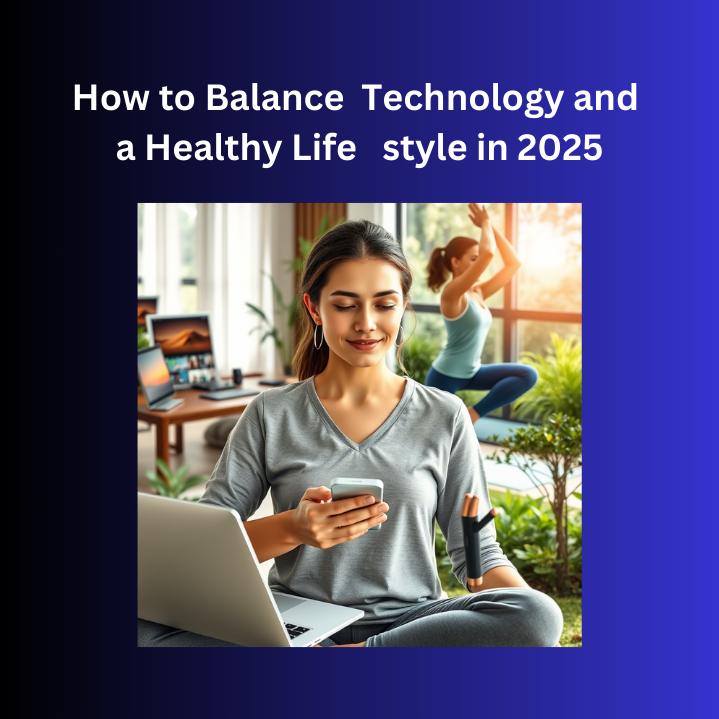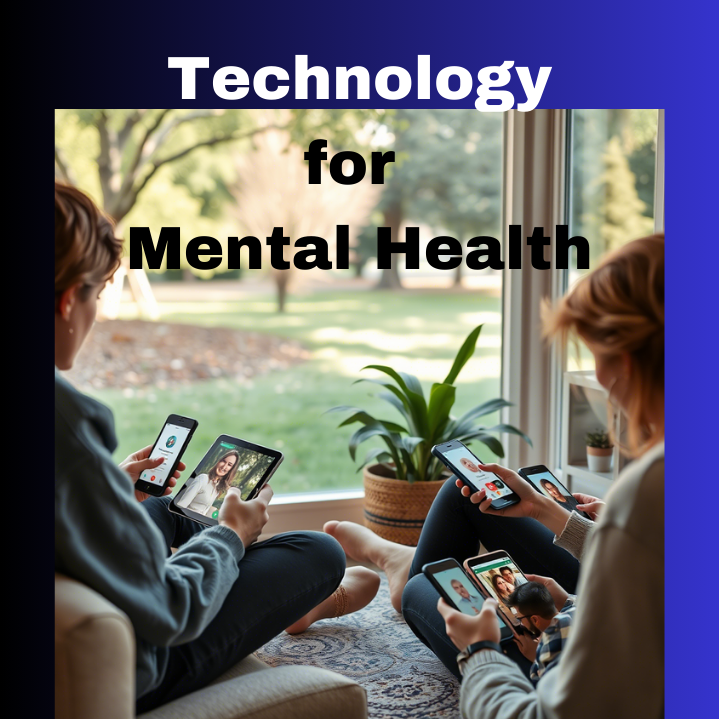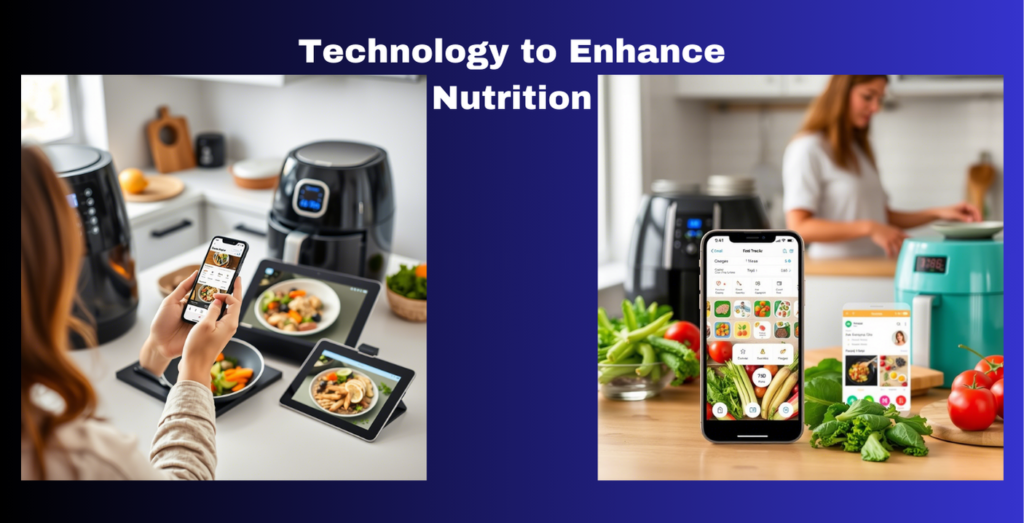How to Balance Technology and a Healthy Lifestyle in 2025
Published: 01 Jan 2025

Table of Contents
Introduction

In today’s digital age, technology is everywhere. HERE I define How to Balance Technology and a Healthy Lifestyle in 2025 From smartphones and laptops to smart home devices and wearables, it has become an inseparable part of our daily lives. While technology offers incredible convenience and connectivity, it can also lead to unhealthy habits if not managed properly. Excessive screen time, sedentary behavior, and constant connectivity can affect physical and mental health.
The key is to balance using technology to enhance our lives while ensuring it doesn’t compromise our well-being. This article explores practical strategies to harmonize technology use with a healthy lifestyle, helping you stay connected without sacrificing your health.
1. Set Boundaries for Screen Time
Why it matters:
Prolonged screen time is linked to various health issues, including eye strain, poor posture, and sleep disturbances. It can also contribute to mental fatigue and reduced productivity.
How to do it:

- Track Your Usage: Use apps like Screen Time (iOS) or Digital Wellbeing (Android) to monitor how much time you spend on your devices. This awareness can help you identify areas where you can cut back.
- Set Limits: Many devices allow you to set daily time limits for specific apps or categories (e.g., social media, gaming). Stick to these limits to avoid overuse.
- Create Tech-Free Zones: Designate certain areas in your home, such as the dining table or bedroom, as tech-free zones. This encourages face-to-face interactions and better sleep hygiene.
- Follow the 20-20-20 Rule: To reduce eye strain, take a break every 20 minutes by looking at something 20 feet away for at least 20 seconds.

2. Prioritize Physical Activity
Why it matters:
A sedentary lifestyle, often exacerbated by excessive technology use, can lead to health problems like obesity, cardiovascular disease, and musculoskeletal issues. Regular physical activity is essential for maintaining overall health and well-being.
How to do it:
- Use Fitness Trackers: Wearables like Fitbit or Apple Watch can help you monitor your activity levels, set fitness goals, and track progress.
- Incorporate Movement: Find ways to add movement to your daily routine. For example, take short walks during breaks, use a standing desk, or do stretching exercises while watching TV.
- Join Online Fitness Programs: Platforms like YouTube, Peloton, or fitness apps offer various workout videos, from yoga and pilates to high-intensity interval training (HIIT).
- Make It Fun: Turn physical activity into a social event by joining a local sports club or participating in virtual fitness challenges with friends.
3. Make use of Technology for Mental Health
Why it matters:
While technology can contribute to stress and anxiety (e.g., through social media or information overload), it can also be a powerful tool for improving mental health when used mindfully.

How to do it:
- Meditation Apps: Apps like Calm, Headspace, or Insight Timer offer guided meditation sessions, breathing exercises, and sleep stories to help you relax and unwind.
- Limit Negative Content: Be mindful of the content you consume. Unfollow accounts or mute topics that trigger stress or negativity.
- Stay Connected: Use messaging apps or video calls to maintain meaningful connections with friends and family, especially if you live far apart.
- Therapy Apps: Platforms like BetterHelp or Talkspace provide access to licensed therapists for virtual counseling sessions.
4. Optimize Sleep Hygiene
Why it matters:
Poor sleep quality can negatively impact your physical health, mood, and cognitive function. The blue light emitted by screens can interfere with your body’s natural sleep and wake-up cycle. Like blue light from electronic devices. This is because light plays a critical role in regulating our sleep and wakefulness.

How to do it:
- Avoid Screens Before Bed: Stop using devices at least 1 hour before bedtime to allow your brain to wind down.
- Use Night Mode: Enable “night mode” or “blue light filter” settings on your devices to reduce eye strain and minimize sleep disruption.
- Sleep-Tracking Apps: Apps like Sleep Cycle or Pillow can analyze your sleep patterns and provide insights to help you improve your sleep quality.
- Create a Relaxing Bedtime Routine: Read a book, listen to calming music, or practice gentle yoga to prepare your body for sleep.
5. Embrace a Digital Detox
Why it matters:
Constant connectivity can lead to burnout, stress, and a sense of being overwhelmed. A digital detox allows you to recharge and refocus on what truly matters.

How to do it:
- Start Small: Dedicate a few hours each day or one day a week to unplug from all devices. Gradually increase the duration as you become more comfortable.
- Engage in Offline Activities: Use this time to pursue hobbies like painting, gardening, or cooking. Spend quality time with loved ones or enjoy nature.
- Set Boundaries: Inform friends and colleagues about your digital detox to manage expectations and avoid unnecessary interruptions.
- Reflect and Reconnect: Use this time to reflect on your goals, values, and relationships. Reconnect with yourself and the world around you.
6. Use Technology to Enhance Nutrition
Why it matters:
Poor eating habits, often fueled by convenience foods and busy schedules, can negatively impact your health. Technology can help you make better food choices and maintain a balanced diet.

How to do it:
- Meal-Planning Apps: Apps like Mealime or Yummly can help you plan healthy meals, create shopping lists, and discover new recipes.
- Food-Tracking Apps: Use apps like MyFitnessPal or Lose It! to track your calorie intake, macronutrients, and hydration levels.
- Healthy Recipe Platforms: Explore websites or YouTube channels dedicated to healthy cooking for inspiration and guidance.
- Smart Kitchen Gadgets: Invest in tools like smart scales or air fryers to make cooking easier and more enjoyable.
7. Foster Real-Life Connections
Why it matters:
While technology enables virtual connections, over-reliance on digital interactions can lead to feelings of isolation and loneliness. Building real-life relationships is crucial for emotional well-being.

How to do it:
- Balance Online and Offline Interactions: Use technology to plan and organize in-person gatherings, such as dinners, game nights, or outdoor activities.
- Join Local Communities: Participate in clubs, classes, or volunteer groups to meet like-minded people and build meaningful connections.
- Practice Active Listening: When spending time with others, put away your devices and focus on the conversation.
- Celebrate Milestones: Use technology to stay connected with distant friends and family, but make an effort to celebrate special occasions in person whenever possible.
Conclusion
Technology is a double-edged sword it can either enhance or hinder our lives, depending on how we use it. By setting boundaries, prioritizing health, and embracing a balanced approach, you can enjoy the benefits of technology without compromising your well-being.
Remember, the goal is not to eliminate technology but to use it mindfully and intentionally. Whether it’s through fitness trackers, meditation apps, or digital detoxes, you have the power to create a harmonious relationship with technology. Start small, stay consistent, and watch as your lifestyle transforms for the better.
FAQs
1. How much screen time is too much?
- For adults, experts recommend limiting recreational screen time to 2 hours per day. For children, the American Academy of Pediatrics suggests no more than 1-2 hours of high-quality content daily, depending on age.
2. Can technology improve mental health?
- Yes, when used wisely. Apps for meditation, therapy, and stress management can provide valuable tools for improving mental well-being. However, it’s important to balance digital tools with real-life interactions and self-care practices.
3. What’s the best way to start a digital detox?
- Begin with small steps, such as setting aside a few hours each day or dedicating one day a week to unplugging. Gradually increase the duration as you become more comfortable with disconnecting.
4. How can I reduce eye strain from screens?
- Follow the 20-20-20 rule, adjust screen brightness to match your environment, and use blue light filters or glasses. Additionally, ensure your workspace is well-lit to reduce glare.
5. Are fitness trackers worth it?
- Absolutely! Fitness trackers can motivate you to stay active, provide insights into your health, and help you set and achieve fitness goals. They’re especially useful for tracking steps, heart rate, and sleep patterns.





